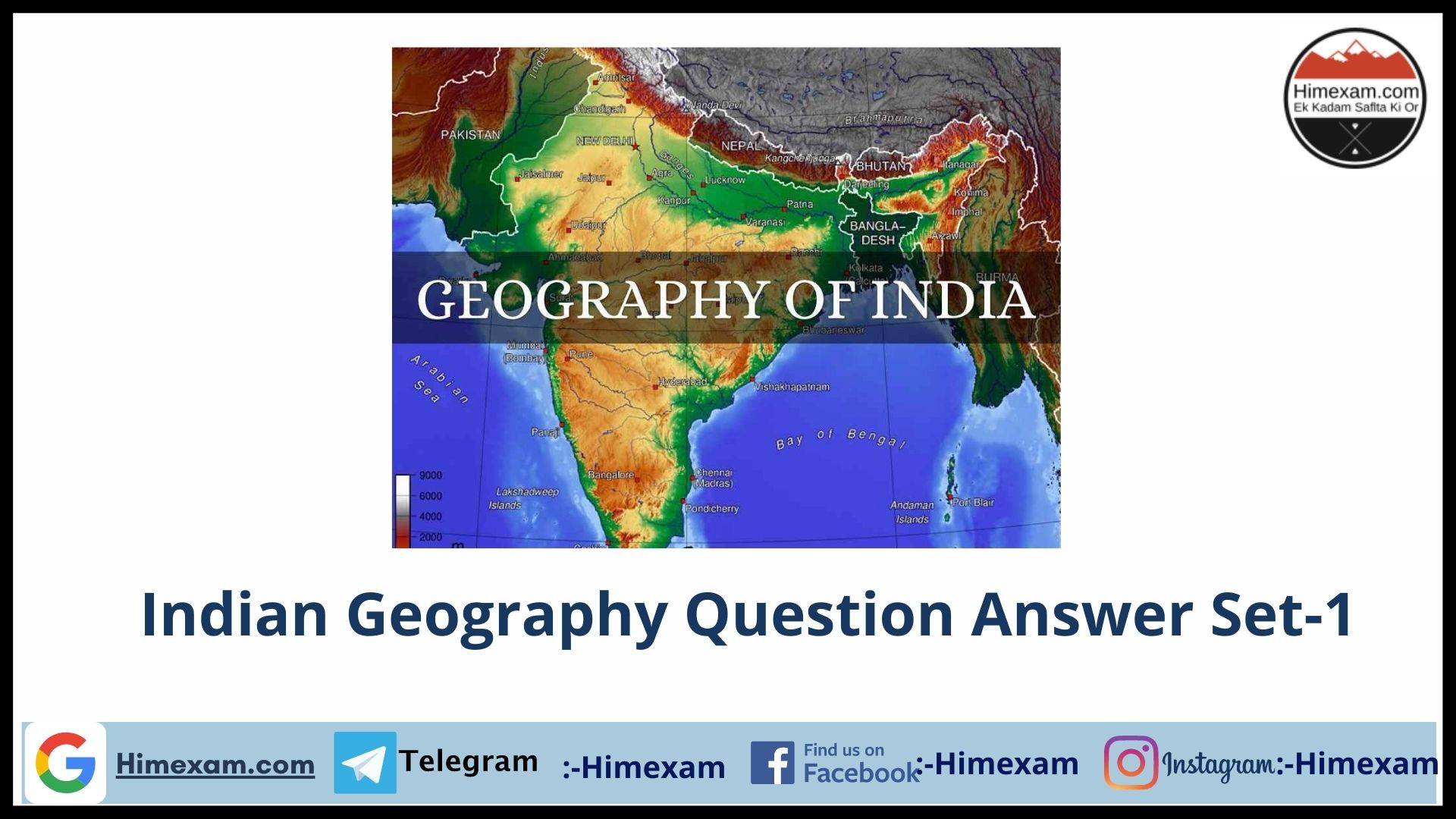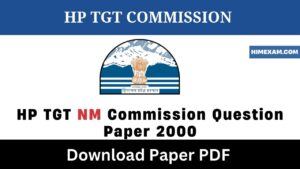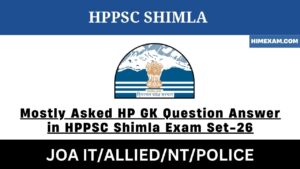Table of Contents
ToggleIndian Geography Question Answer Set-1
||Indian Geography Question Answer Set-1||Indian Geography MCQ Set-1||
1. The famous Lagoon lake of India is :
(A) Dal Lake
(B) Chilka Lake
(C) Pulicat Lake
(D) Mansarover
Explanation:-Chilka Lake is a brackish water lagoon, spread over the Puri, Khurda and Ganjam districts of Orissa state on the east coast of India, at the mouth of the Daya River, flowing into the Bay of Bengal, covering an area of over 1,100 sq. km. It is the largest coastal lagoon in India and the second largest lagoon in the World. It is the largest wintering ground for migratory birds on the Indian sub-continent.
2. Where is ‘Raisina Hills’?
(A) Where Rashtrapati Bhavan is situated
(B) The Hill feature in Srinagar, otherwise known as ‘Shankara-charya Hill’
(C) The place where the Dogra rulers of J & K built their fort in Jammu.
(D) The rock feature at Kanyakumari where Swami Vivekananda’s statue was erected.
Explanation:-Raisina Hill is an area of Lutyens’ Delhi, New Delhi, housing India’s most important government buildings, including Rashtrapati Bhavan, the official residence of the President of India and the Secretariat building housing the Prime Minister’s Office and several other important ministries. It is surrounded by other important buildings and structures, including the Parliament of India, Rajpath, Vijay Chowk and India Gate.28) The term “Raisina Hill” was coined following acquisition of land from 300 families from X and Malcha villages. About 0.001 acres of land was acquired under the “1894 Land Acquisition Act” to begin the construction of the Viceroy’s House
3. Which of the following passes lies in the Sutlej valley ?
(A) Nathu La
(B) Jelep La
(C) Shipki La
(D) Sherabathanga
Explanation:-Shipki La is a mountain pass and border post on the India-China border. The river Sutlej enters India through this pass. It is an offshoot of the ancient Silk Road. It is located in Kinnaur district in the state of Himachal Pradesh, India, and Tibet Autonomous Region in People’s Republic of China. The pass is India’s third border post for trade with China after Nathu La in Sikkim, and Lipulekh in Uttarakhand. The pass is close to town of Khab.
4. Where is Khyber Pass situated?
(A) Bhutan
(B) Bangladesh
(C) India
(D) Pakistan
Explanation:-The Khyber Pass is a 53-kilometer (33-miles) passage through the Hindu Kush mountain range. It connects the northern frontier of Pakistan with Afghanistan. At its narrowest point, the pass is only 3 meters wide. On the north side of the Khyber Pass rise the towering, snow-covered mountains of the Hindu Kush. The Khyber Pass is one of the most famous mountain passes in the World. It is one of the most important passes between Afghanistan and Pakistan. It is the best land route between India and Pakistan and has had a long and often violent history. Conquering armies have used the Khyber as an entry point for their invasions. It was also been a major trade route for centuries.
5. Where is Panzseer valley situated ?
(A) Lebanon
(B) Afghanistan
(C) Jammu and Kashmir, India
(D) Syria
Explanation:-The Panjshir Valley is a valley in north-central Afghanistan, 150 km north of Kabul, near the Hindu Kush mountain range. Located in the Panjshir Province it is divided by the Panjshir River. The valley is home to more than 140,000 people, including Afghanistan’s largest concentration of ethnic Tajiks. It literally means ‘Valley of the Five Lions.’
6. The piligrims of Kailash Mansarovar have to pass through which pass to enter into Tibet ?
(A) Khardungala
(B) Rohtang
(C) Lipu likh
(D) Nathu la
Explanation:-Nathu La is a mountain pass in the Himalayas. It connects the Indian state of Sikkim with China’s Tibet Autonomous Region. The pass, at 4,310 m above mean sea level, forms a part of an offshoot of the ancient Silk Road. The pass would be particularly useful for pilgrims visiting monasteries in Sikkim such as Rumtek, one of the holiest shrines in Buddhism. For Hindus, the pass reduces the journey time to Mansarovar Lake from fifteen to two days.
7. Which of the following cities lies to the western-most longitude ?
(A) Jaipur
(B) Nagpur
(C) Bhopal
(D) Hyderabad
Explanation:-Jaipur is the headquarters of Jaipur district which is situated in the eastern part of Rajasthan. It is located at 26°92’N 75° 82′ E. It has an average elevation of 431 metres (1417 ft). The major rivers passing through the Jaipur district are Banas and Banganga.
8. Which one of the following river flows through a rift valley ?
(A) Godavari
(B) Narmada
(C) Krishna
(D) Mahanadi
Explanation:-Narmada is the only river in India that flows in a rift valley, flowing west between the Satpura and Vindhya ranges. The Tapti River and Mahi River also flow through rift valleys, but between different ranges. One theory is that the area in which the fossils are located, i.e., the Narmada Valley near Mandla, was actually a deep inundation of the sea into peninsular India till the Post- Cambrian Tertiary age, about 40 million years ago. This means that Narmada was a very short river which terminated in the inland sea above Mandla, and that the recession of the sea caused geological disturbances, which created the present rift valley through which the Narmada River and Tapti River flow in their present journey to the Arabian Sea.
9. Duncan Passage is located between
(A) South and Little Andaman
(B) North and South Andaman
(C) North and Middle Andaman
(D) Andaman and Nicobar
Explanation:-Duncan Passage is a strait in the Indian Ocean. It is about 48 km (30 mi) wide; it separates Rutland Island (part of Great Andaman) to the north and Little Andaman to the south. West of Duncan Passage is the Bay of Bengal; east is the Andaman Sea. Several small islands and islets lie along the passage
10. India lies in the ……………. hemisphere.
(A) northern and eastern
(B) southern and eastern
(C) northern and western
(D) northern and southern
Explanation:-India lies to the north of the equator, geographically located at 28° 36.8′ N and 77° 12.5′ E in the northern hemisphere of the globe. India takes its standard time from the meridian of 82° 30′ E, which is 5 ½ hours ahead of Greenwich Mean time (0 (zero) longitude).
||Indian Geography Question Answer Set-1||Indian Geography MCQ Set-1||
Join Our Telegram Group :- Himexam









